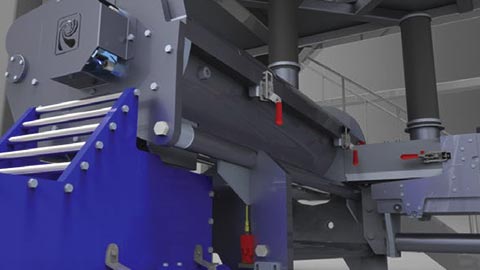CAD and design management create an efficiency advantage
CAD and design management create an efficiency advantage

Case Study
Productivity rises dramatically for Reading Bakery Systems
Reading Bakery Systems
CAD and design management give baking equipment manufacturer a 63 percent efficiency advantage and that’s just the beginning
In 2003, Reading Bakery Systems replaced AutoCAD with Solid Edge® software. The company’s management does a good job of tracking engineering productivity and has been able to document a huge productivity increase since switching to the new software. Using AutoCAD, the average time needed to design a part and complete a detailed manufacturing drawing was 3.2 hours. With Solid Edge the same effort requires only 1.2 hours. The company has determined that in its first year with Solid Edge, it was able to generate 2.7 Solid Edge drawings for every one AutoCAD drawing it produced the previous year. And these statistics are based on only a partial use of Solid Edge because the company was still phasing in the new software over the course of the year.
Michael Cox, manager, Information Technology at Reading Bakery Systems, attributes the 63 percent productivity gain to two things: the ease of working in Solid Edge and the enhanced information access and control made possible by Insight™, Solid Edge built-in design management system. “While it’s definitely easier to create designs and drawings in Solid Edge, we attribute a lot of the productivity gain to Insight,” says Cox. “Insight permits the reuse of design data to a much greater extent because we can find existing information and we can trust it now. Also Insight has virtually eliminated problems such as saving the same file in multiple locations and overwriting another’s work.”
Baking equipment for the big jobs
Nestled in the rolling hills of southeastern Pennsylvania, Reading Bakery Systems (RBS) is a supplier of equipment used to produce pretzels, cookies, crackers, biscuits and pet treats. Over 50 years in business, the company has built up a worldwide customer base that includes such well-known companies as Frito-Lay, Nabisco, Keebler and Kellogg’s. RBS, which is based in Robesonia, Pennsylvania, produces a wide-range of equipment, everything from dough mixers to enormous ovens. Its products are not what you’d find in the back of your local bakery. “Our equipment is used for very high-volume production,” explains Cox.
Although RBS has product families, every system it sells is customized to some extent. That necessitates a significant design effort as well as many thousands of manufacturing drawings each year. As with all companies these days, RBS is under pressure from its customers to speed delivery of the equipment and it is often bound by contract to meet tight deadlines. “We do business all over the world and especially in foreign countries, there are penalty clauses,” says Cox. “If you don’t deliver by a certain date you pay a penalty. So it’s very important that we meet our delivery dates.”
In the past, RBS used AutoCAD to design and document its equipment. The increasing pressure to work more efficiently led management to look into solid modeling. After a trial run that convinced everyone of the value of this technology, RBS evaluated Solid Edge, SolidWorks and Autodesk Inventor. The company chose Solid Edge for several reasons. Not only did Solid Edge appear to be the easiest solid modeler to use, it also included the powerful assembly modeling and sheet metal design capabilities that RBS required. But equally important in the selection of Solid Edge was Insight, the built-in design management system. “We knew we needed to control our design data,” says Cox. “What is so nice about Solid Edge is that it gives you the basic infrastructure for design management (Insight) with the purchase of the software.”
